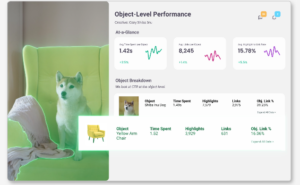By Alex Ginn, Head of Sales, Adverty
From Pac-Man to Donkey Kong via Super Mario and Missile Command, video games are the oldest interactive consumer media out there.
And yet, even in the age of social media, connected TV, programmatic ad buying and interactive TV content, in-game advertising remains a remarkably untapped market.
The latest study by games market insights company Newzoo predicts the gaming market will reach 3bn players by 2023, worth an estimated $200bn. By the end of this year there will be 2.7bn gamers worldwide, 2.5bn of whom will be playing on mobile devices.
And thanks to the popularity of the free-to-play (F2P) format, 98% of all mobile game revenues are generated through in-game transactions. Though staggeringly high, that number should come as no surprise to those familiar with the platform: the diverse and engaged audience, the preference for in-stream, native formats and the plethora of in-app, ad tech solutions available today are why Netflix has declared Fortnite, the popular multiplayer game, a bigger competitor than its like-for-like rivals such as HBO.
Furthermore the platform is far more versatile than its name suggests. During lockdown, as people flocked to gaming platforms, nearly 28 million watched a virtual Fortnite concert by rapper Travis Scott. Servers hit capacity when 12 million players joined a live Fortnight event, with 8.4m more watching live online.
An untapped market
And yet despite the mind-boggling number of engaged, passionate gaming enthusiasts, gaming remains largely untapped as an advertising channel.
Gen Z and Millennials make up the majority share of gamers yet are almost impossible to reach via alternative digital platforms thanks to the popularity of ad blockers, and their aversion to traditional TV.
Gaming is now a social media in its own right, but one in which advertisers can target users and share their messages within the games themselves, all of which opens up a world of creative possibility. And there is no vertical that cannot take advantage of these opportunities. The most common verticals are FMCG, Tech, Gaming and Fashion although we have seen campaigns from Automotive, Banking and Supermarkets – provided their message is aimed at the gaming audience, it’s a win.
A world without ad blockers
We have already seen major brands such as Nike and Red Bull create attractive, non-intrusive advertising for their target audience, with ads blending naturally into the game environment and no ad blockers in sight.
Earlier this year in a study with Dentsu Data Labs we found that display advertising placed in natural contexts within games was the favoured format among mobile users. Furthermore, our study showed that audiences were five times more likely to prefer eSports environments for advertising, compared to other gaming genres.
And, of those who participated in the study, 78% of those seeing an ad were able to recall the brand they had seen, with respondents also reporting that in-game ad formats offer a significantly more positive experience than web banners.
Marketers can also be reassured that as advertising planning methods diversify, gaming not only remains a completely brand safe environment but that only 9% of gamers reported a willingness to pay for an ad-free environment, suggesting a long and healthy future for brands willing to invest in this space.
Programmatic freedom
One of the factors driving gaming advertising is the rise of programmatic advertising which gives brands the freedom to pause, limit or upscale their activity at will. If a consumer is identified as having spent more time with a brand via a specific game, the advertiser can adjust which games the ads appear in at the click of a button.
They can also target age groups and genders programmatically, with three core age group segments – under-13, 13-17 and 18 and over – that can be targeted specifically within the DSP.
There is a certain irony that the ways in which brands could be building a following through gaming is the stuff of games themselves. From Minecraft to Lego World the key is tactical planning and good use of assets for effective, impactful results.
In-game ads are the perfect way for brands to reach an engaged audience while allowing publishers to monetize their platform without overwhelming their customer database and driving players away.
It’s a winning formula, just waiting to be taken up for the ultimate win-win partnership.








